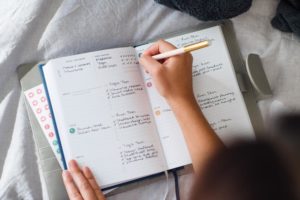
Documenting one’s daily routine under the conditions of a quarantine, applying autoethnographic tools.
Short description of autoethnography as a research method:
Autoethnography is a form of qualitative research in which an author uses self-reflection and writing to explore anecdotal and personal experience and connect this autobiographical story to wider cultural, political, and social meanings and understandings. Autoethnography is a self-reflective form of writing used across various disciplines such as communication studies, performance studies, education, English literature, anthropology, social work, sociology, history, psychology, religious studies, marketing, business and educational administration, arts education, and physiotherapy.
Definitions by various authors:
Autoethnography is a form or method of research that involves self-observation and reflexive investigation in the context of ethnographic field work and writing (Maréchal 2010).
Autoethnography is a form or method of research that uses writing and storytelling, as well as it is a method that connects the autobiographical and personal to the cultural, social, and political (Carolyn Ellis 2004).
Autoethnography uses personal experience to describe and critique cultural beliefs, practices, and experiences. Acknowledges and values a researcher’s relationships with others. Shows people in the process of figuring out what to do, how to live, and the meaning of their struggles. Social life is messy, uncertain, and emotional. If our desire to research social life, then we must embrace a research method that, to the best of its/our ability, acknowledges and accommodates mess and chaos, uncertainty and emotion (Adams, 2015).
An example:
The Genuine Scientist-Practitioner in Vocational Psychology: An Autoethnography
https://eprints.usq.edu.au/3793/1/McIlveen_2007_Autoethnography_Authorversion.pdf
Leading question(s):
How is it possible to live in the quarantine and get familiar with new people, new places and cultures?
How has life changed since the quarantine began?
Where do you stay during the quarantine?
How do you like that place?
What do you see when you look out of the window?
How does the quarantine affect our everyday life and our daily routine?
How does it influence our social relations?
What kind of effect the quarantine has on our daily responsibilities such as work, study, social duties?
How do you keep in touch with the world outside?
How has your media usage patterns changed?
What do you miss the most from your life before the quarantine?
What do you miss the least from your life before the quarantine?
Is there anything that has changed for the better since the quarantine has started?
How have your personal relationships changed?
How about intimacy and romantic relationships?
Do you experience any economic issues in connection with the situation?
What kind of problems do you have to face because of the situation?
Is it possible to get familiar with foreign people during the quarantine?
How does it work for you?
What kind of shared experiences do you have?
Media:
Students participating in the program are supposed to document their quarantine experiences with the help of a personal diary during the project.
The diary is required to have a written part (for example in a blog format) that must be completed with audio/visual documentation such as pictures, photographs, drawings or videos.
The main idea of the task is to grasp and to reflect on the current extreme situation and to describe how it is possible to live in the quarantine and to get familiar with new people, new places and cultures.
Recent Comments